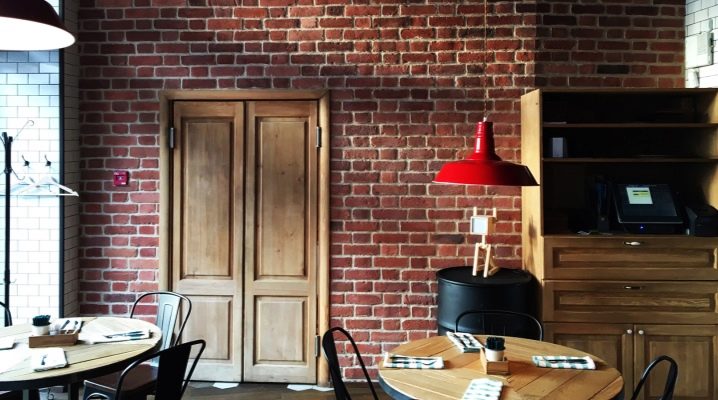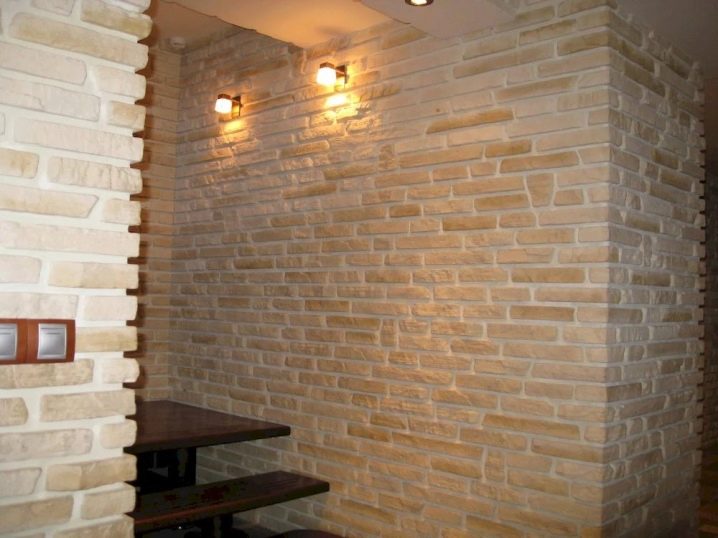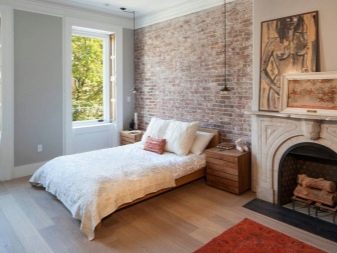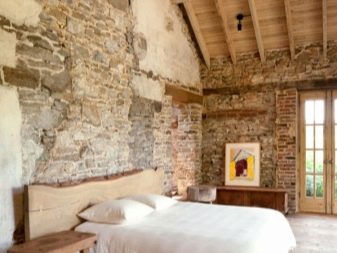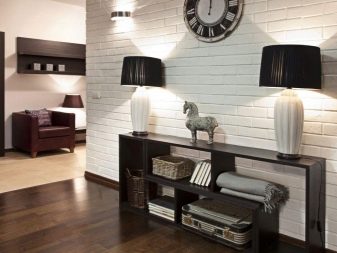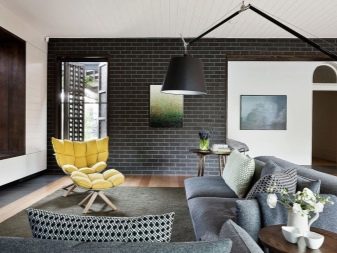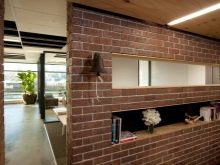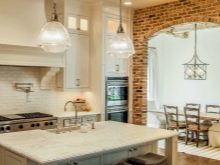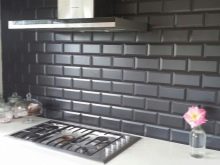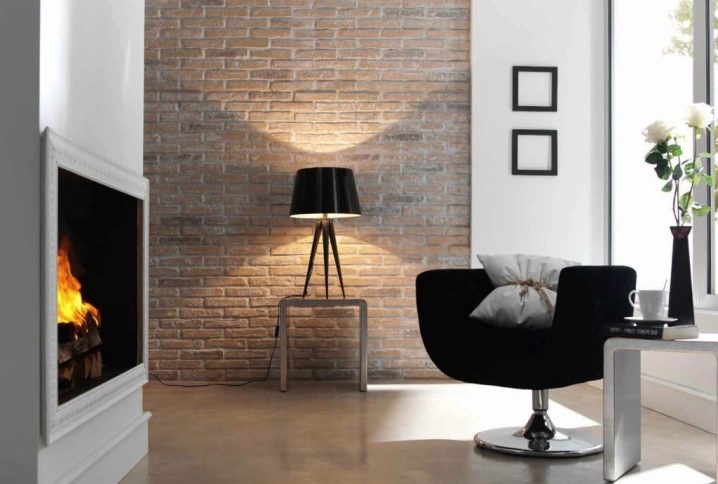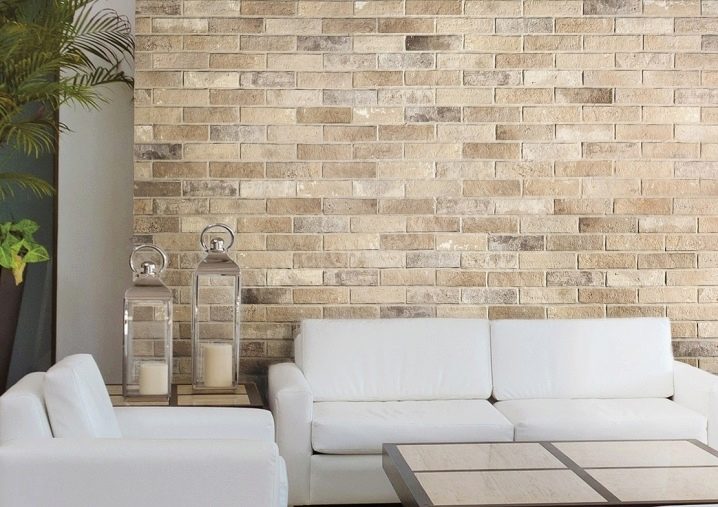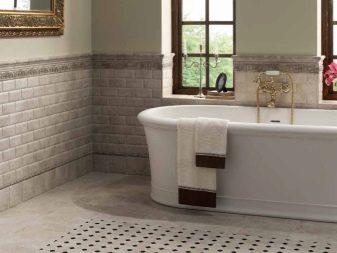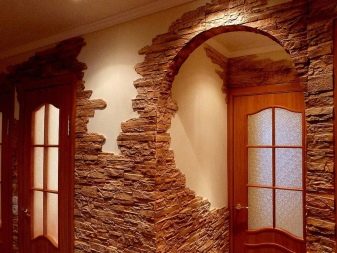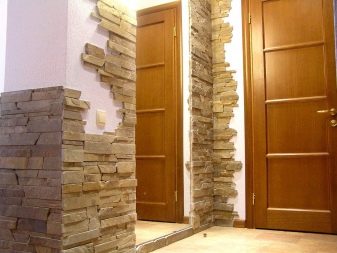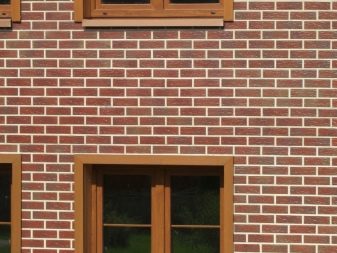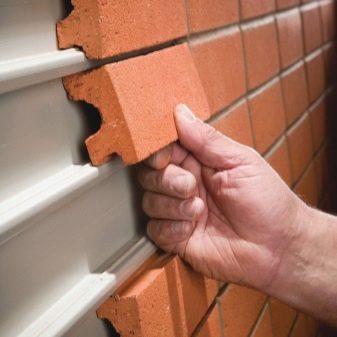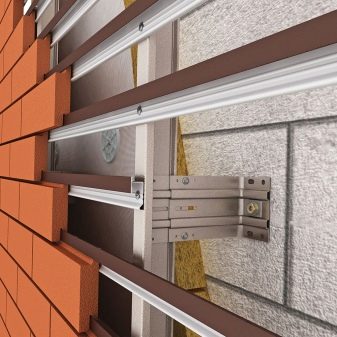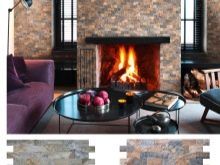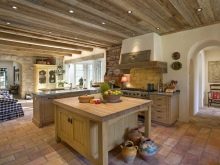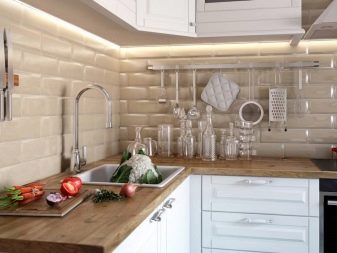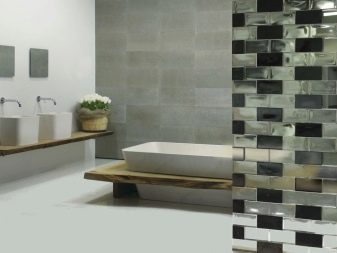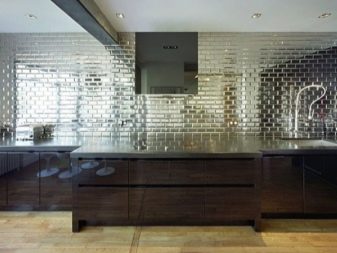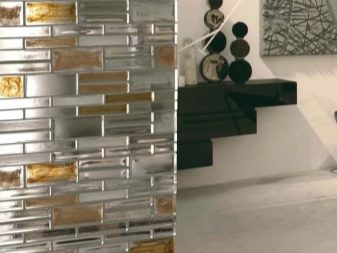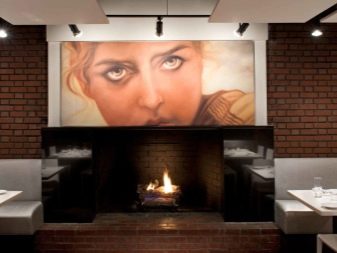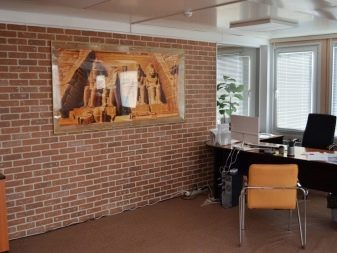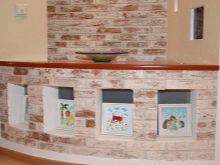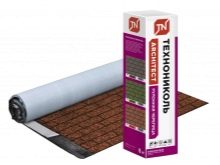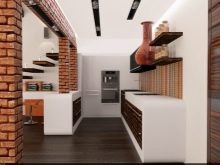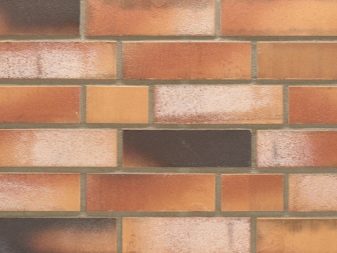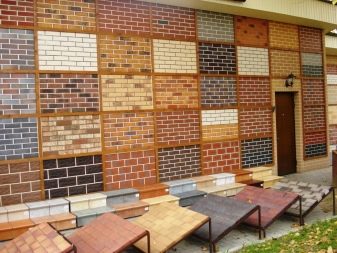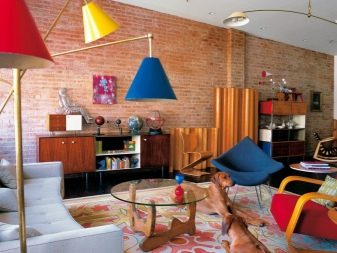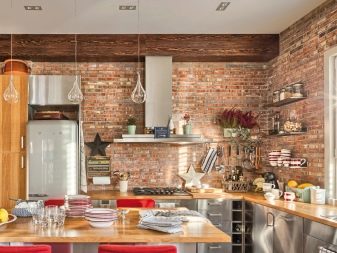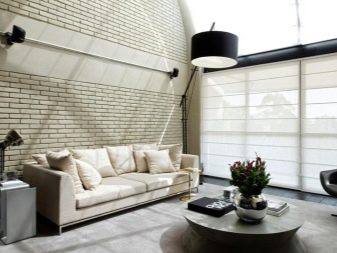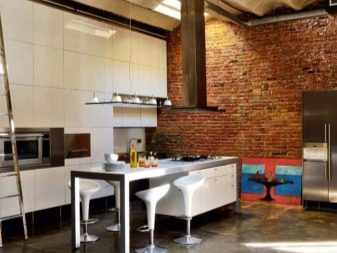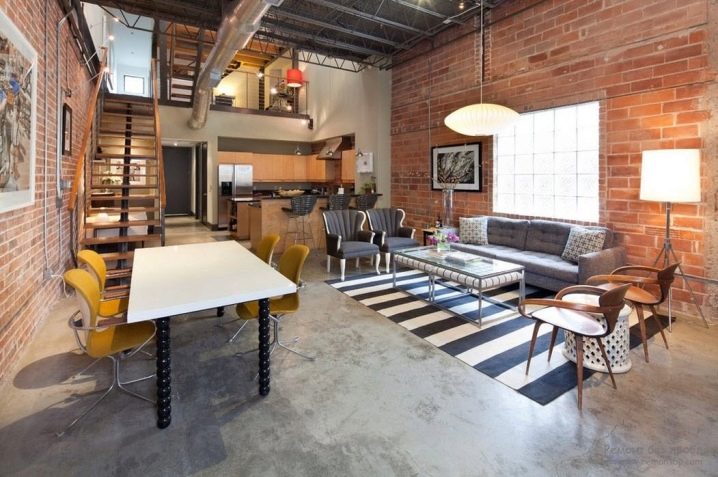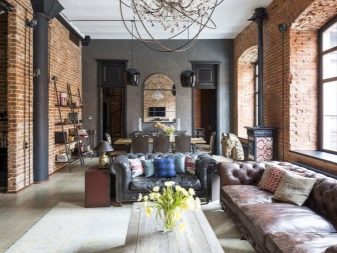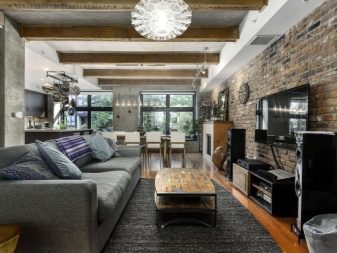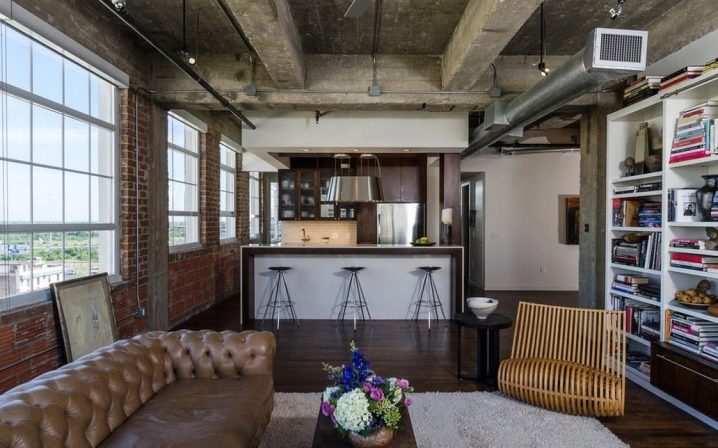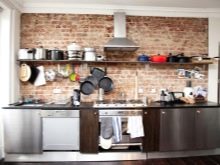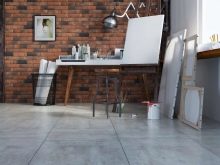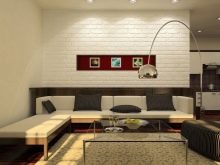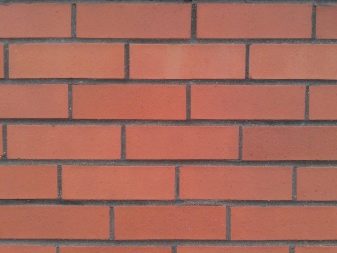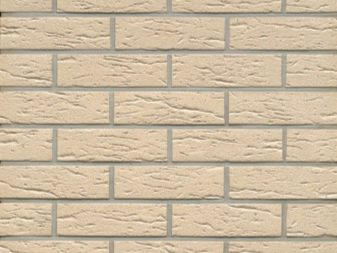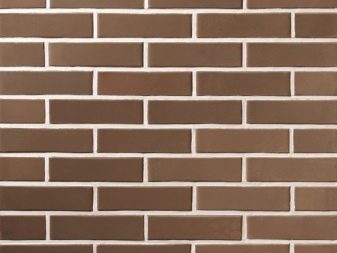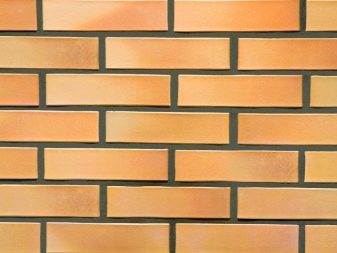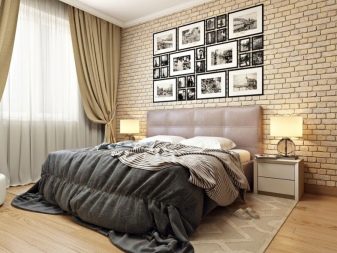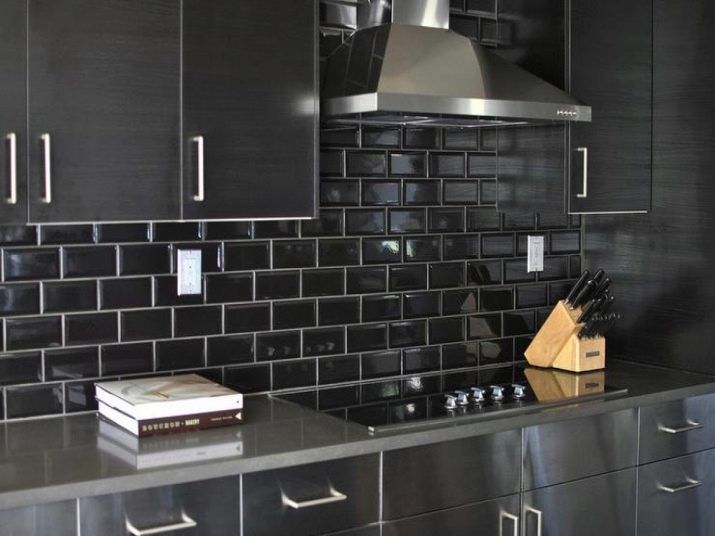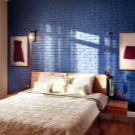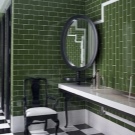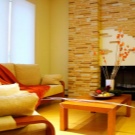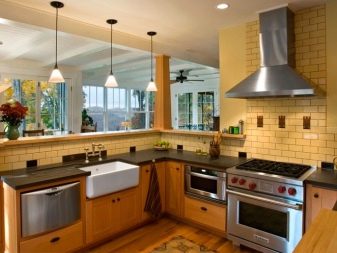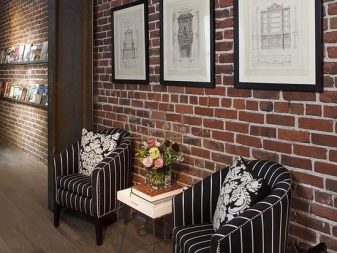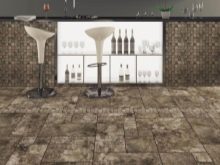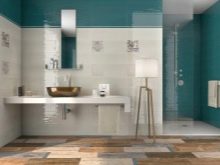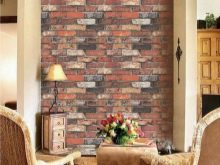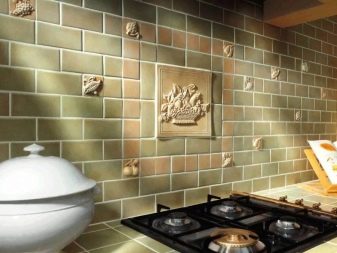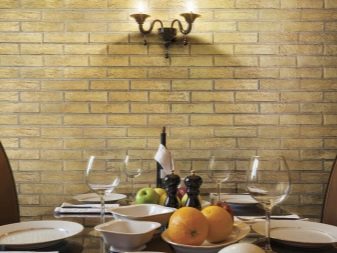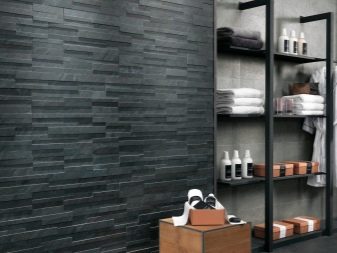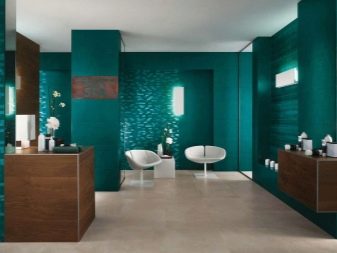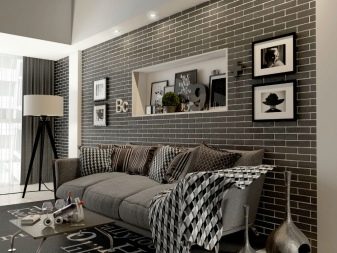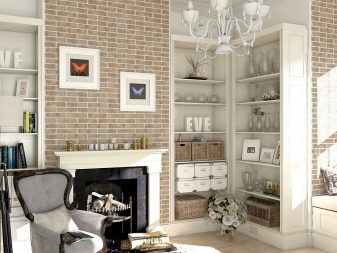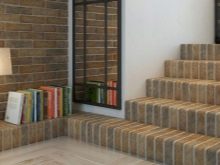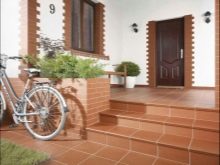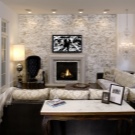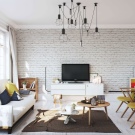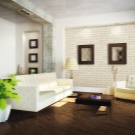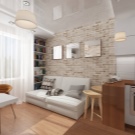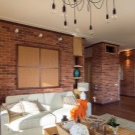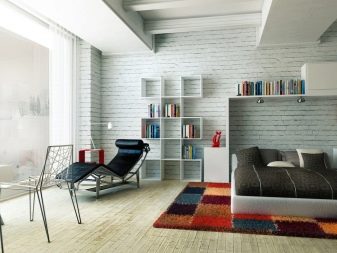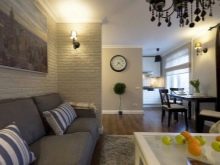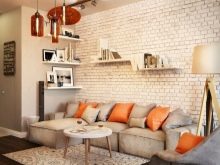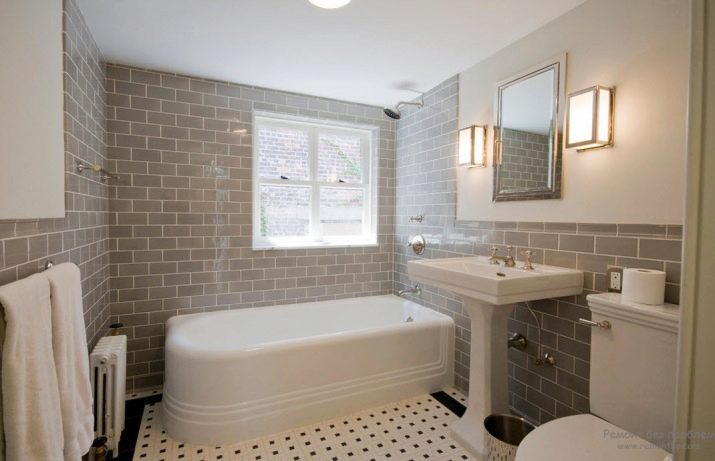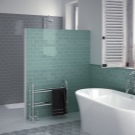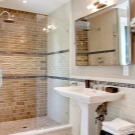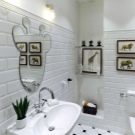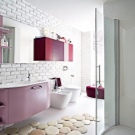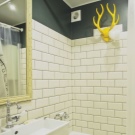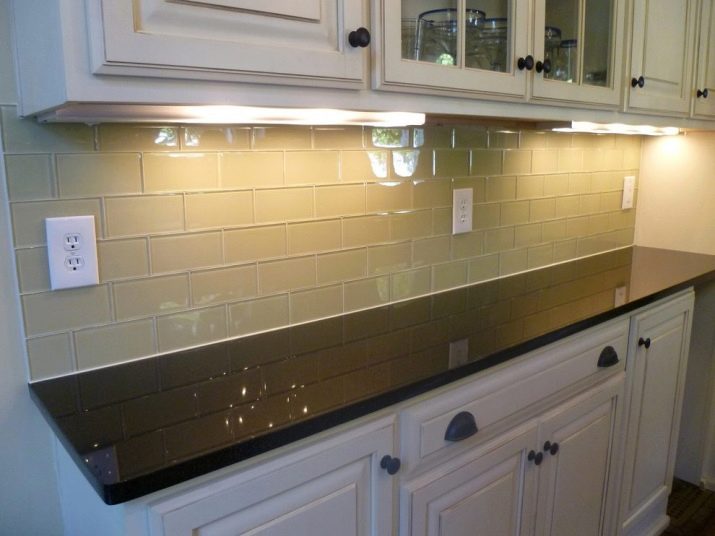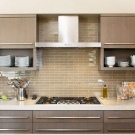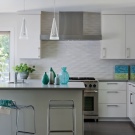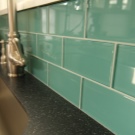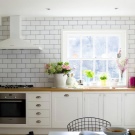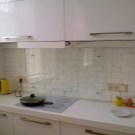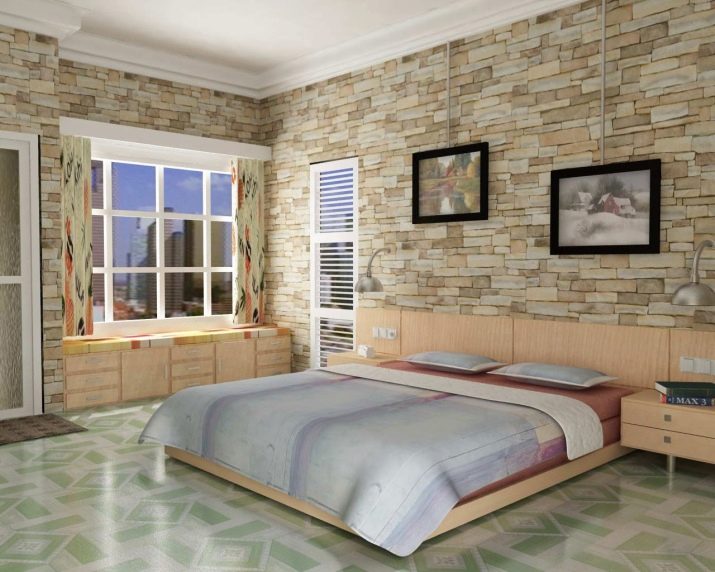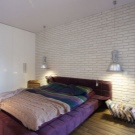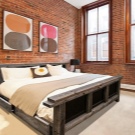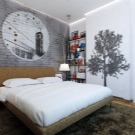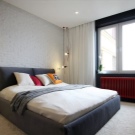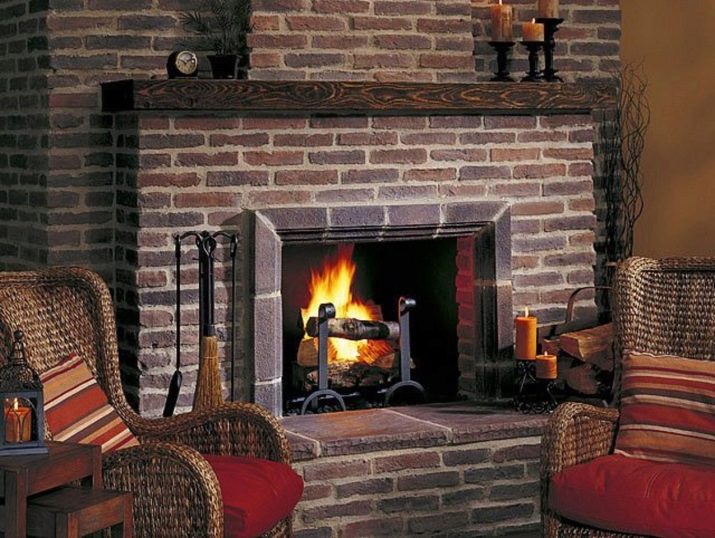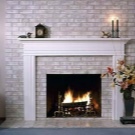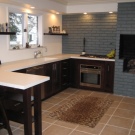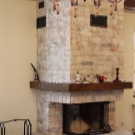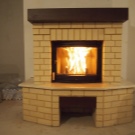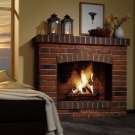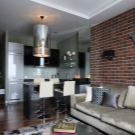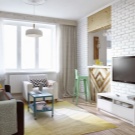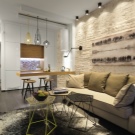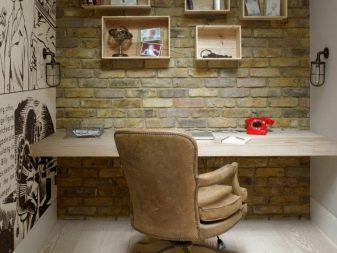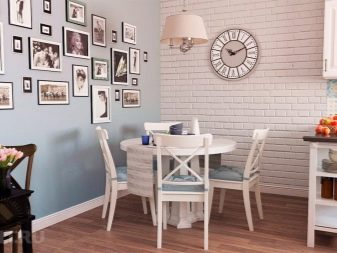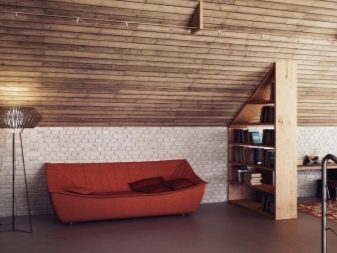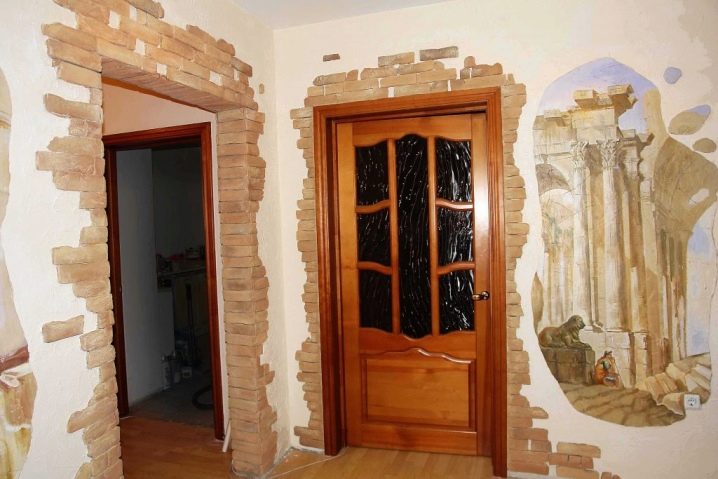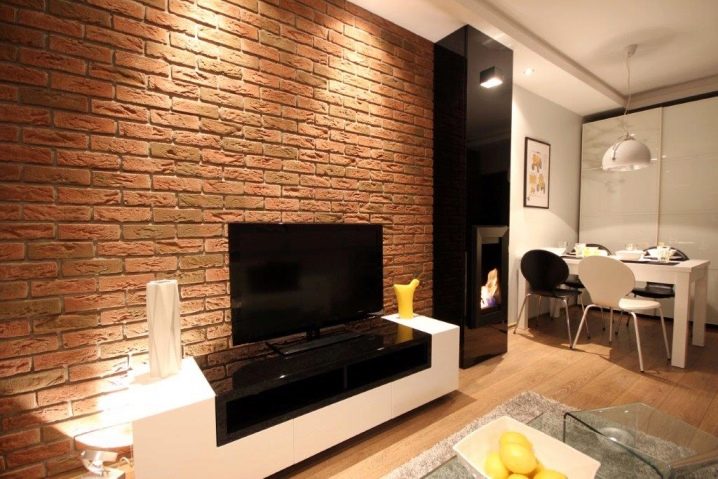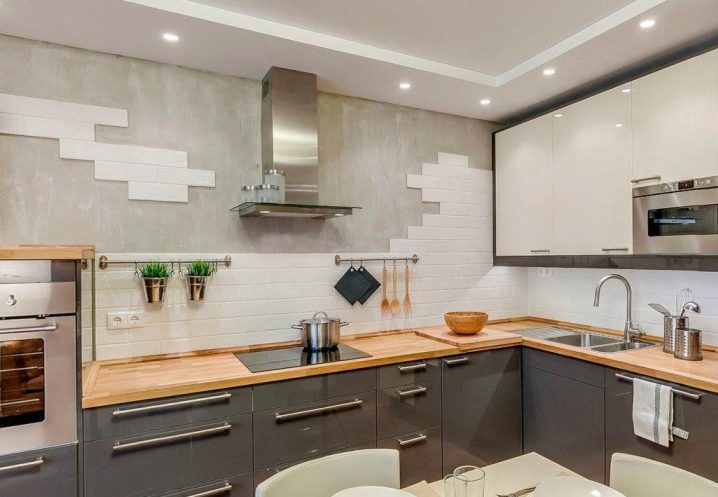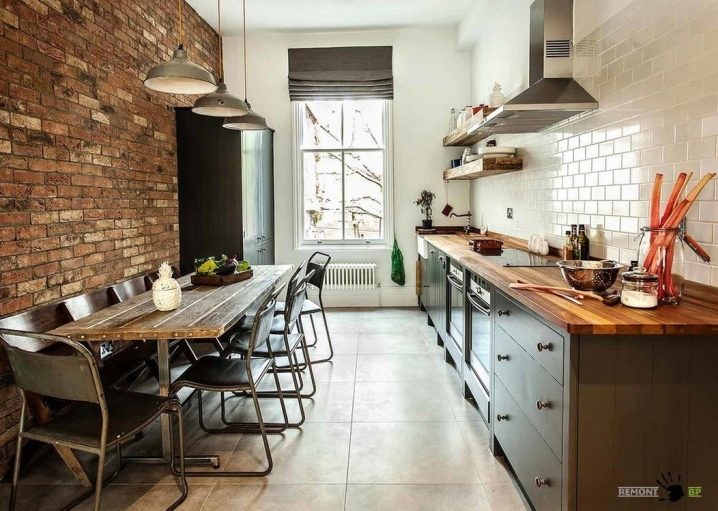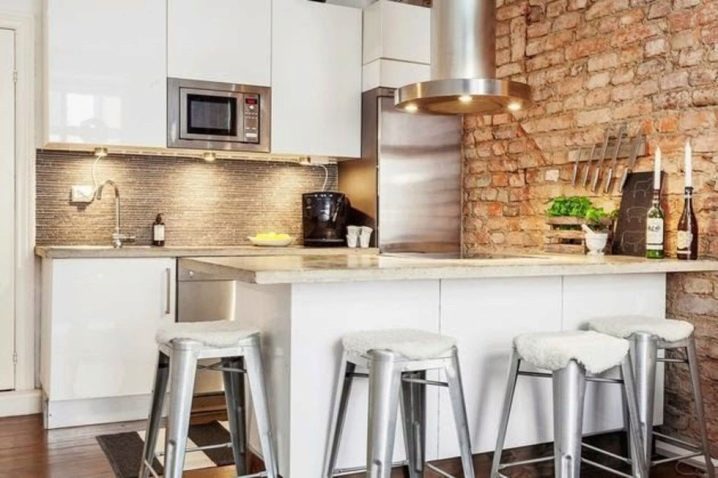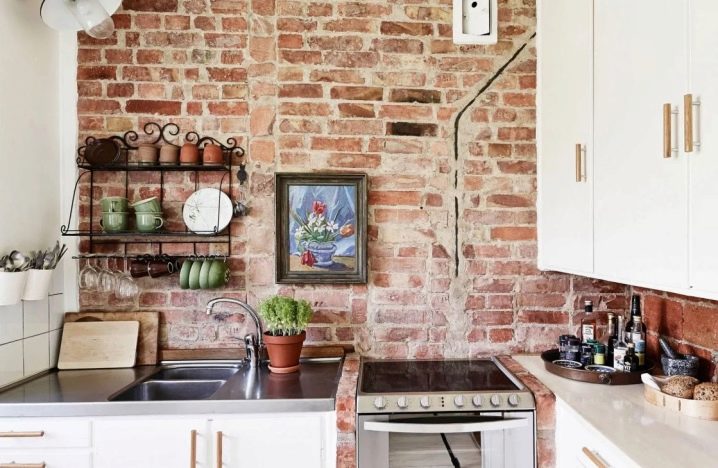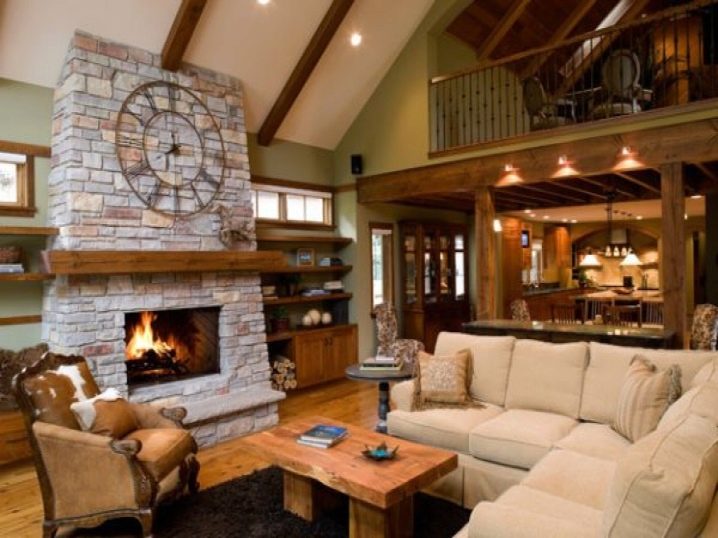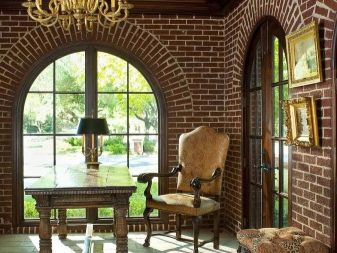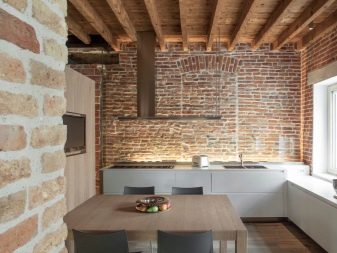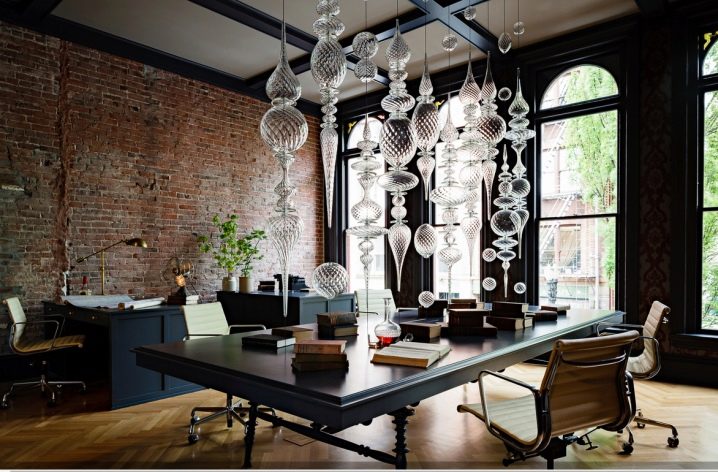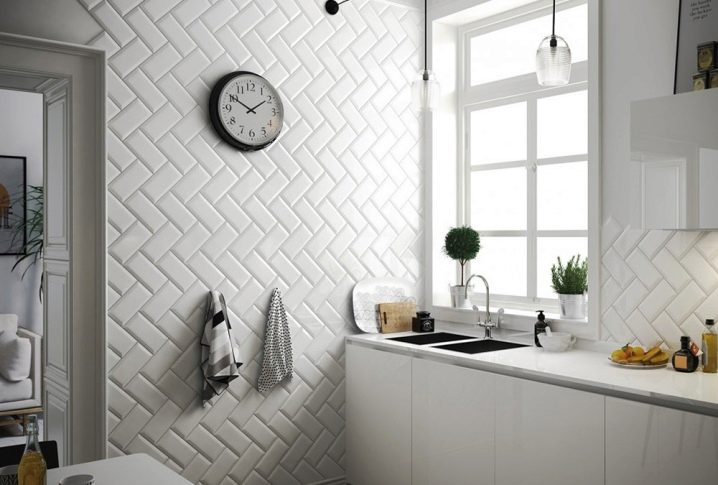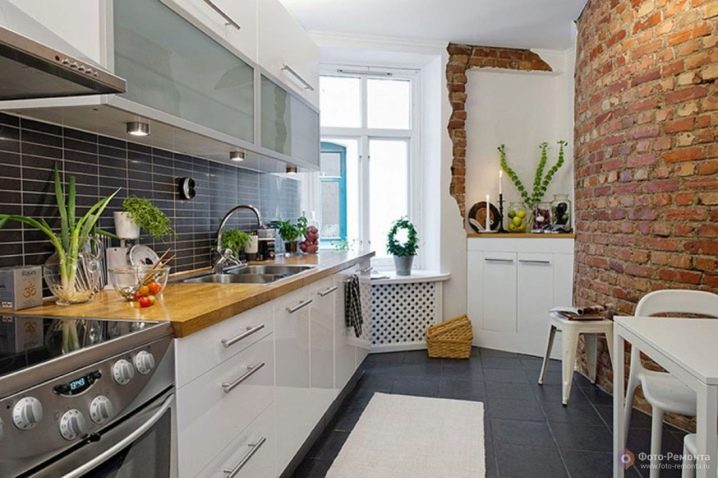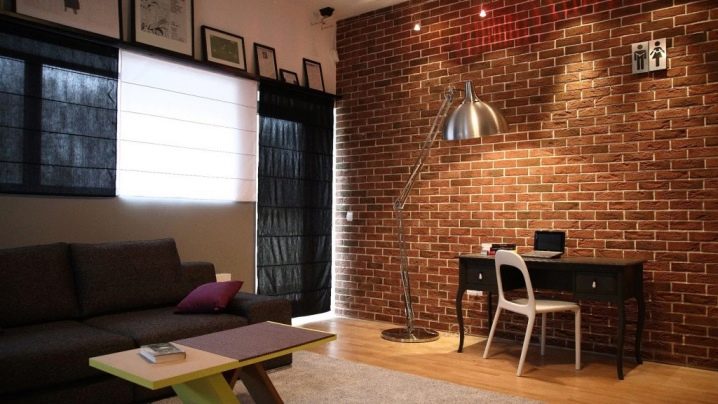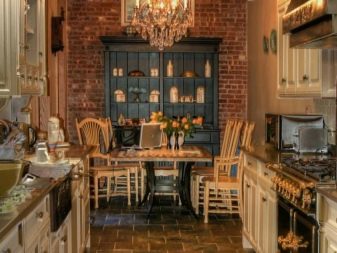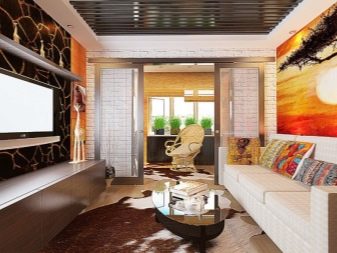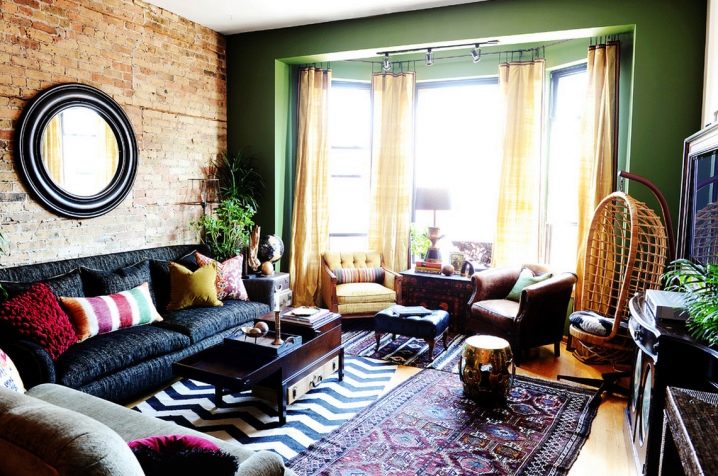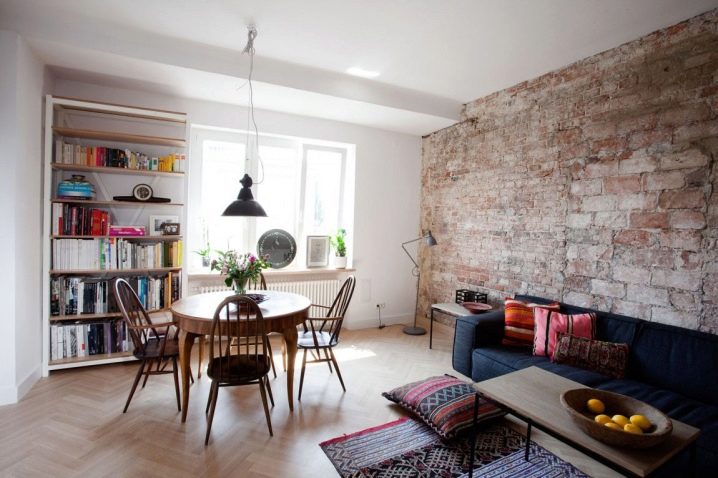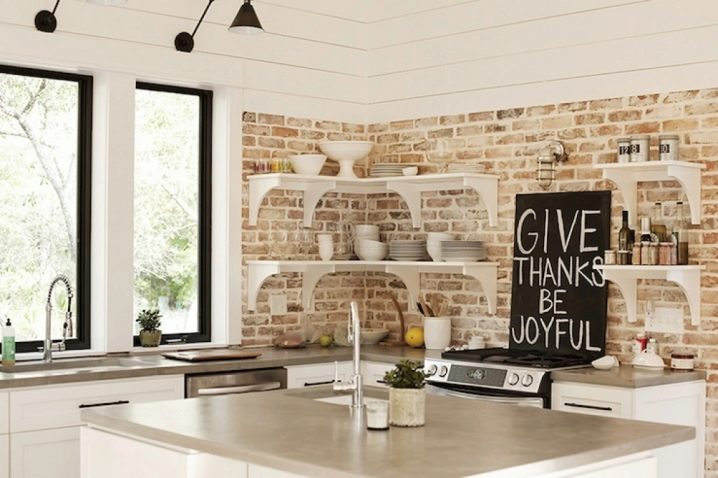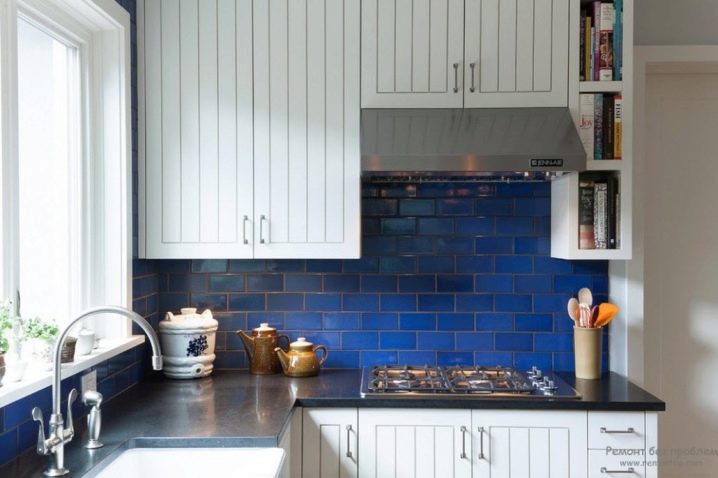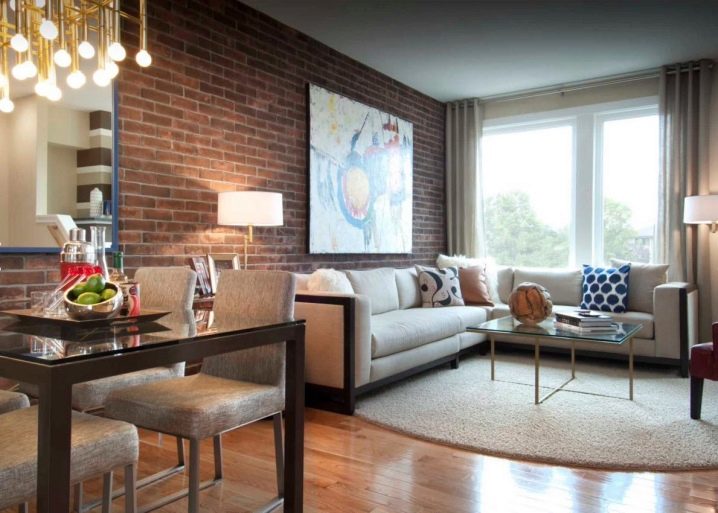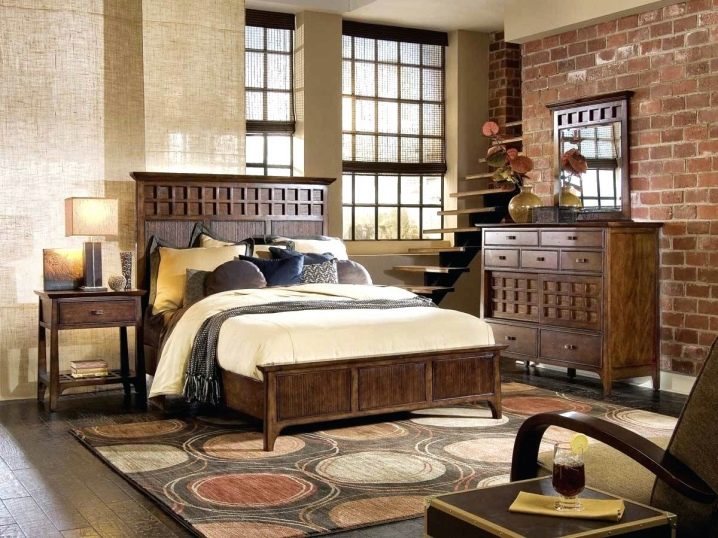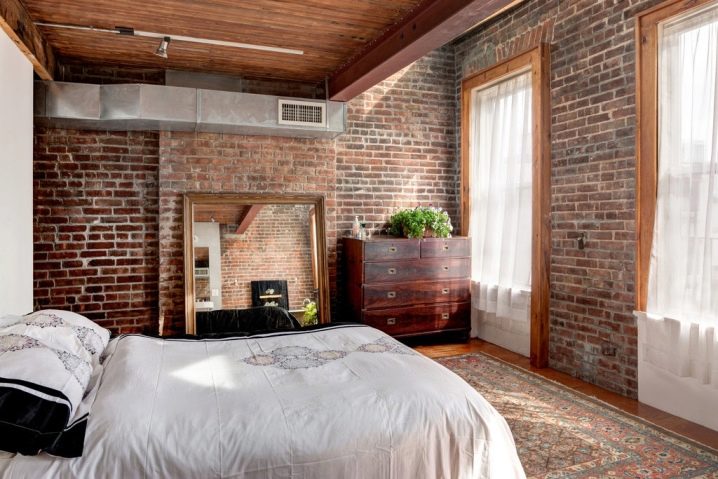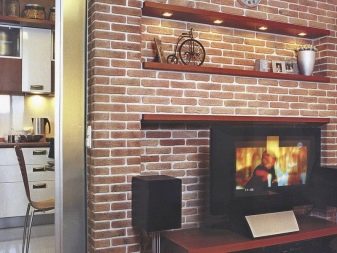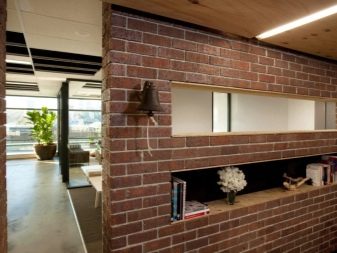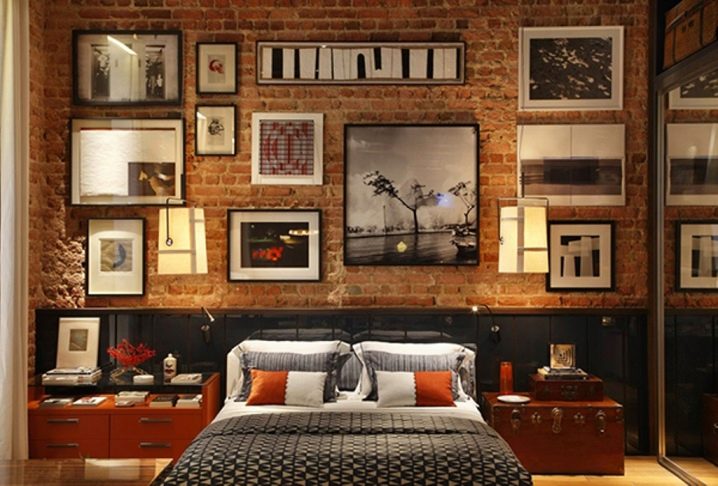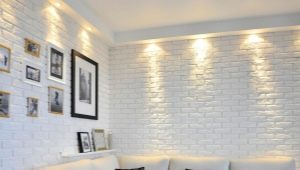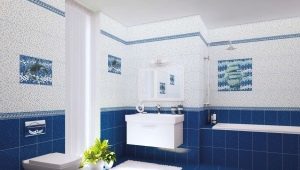Brick Tiles in Interior Design
There are a huge number of options for interior decoration. Always remain popular wallpaper, often the best solution for the owners is tile.
In recent times, when minimalism has come into vogue, more and more people have given preference in interior design to decorative brick-like tiles.
Special features
It will not be a revelation to the fact that while developing the tile for brick, it was planned to be used for cladding facades of knowledge. However, very quickly, designers realized that with proper, properly thought-out design, this material can be used for interior decoration. Thus, today, designers, applying tiles under the brick, create unique and unusual compositions.
This material has a number of advantages. Apart from the original appearance, it is worth emphasizing the environmental friendliness of the facing tile.Indeed, in recent years, most of the owners pay attention primarily to this indicator. The more environmentally friendly materials that are used for repairs, the calmer feel tenants. Therefore it is worth mentioning separately that the tile is absolutely eco-friendly and does not contain any harmful impurities.
It is worth paying attention to other undoubted advantages of tile under the brick. It can be easily entered even in remote places like corners, ledges and other relief surfaces. If necessary for the master it will not be difficult to cut the elements of the tile, if its part goes beyond the limits of the drawing or does not fit on the wall. This allows you to significantly simplify the installation of tiles and also makes it possible to create neat corners - both internal and external.
Such material is wear resistant. He is honored to experience temperature fluctuations, is resistant to elevated levels of humidity, calmly reacts to chemical cleaning products and tolerates various mechanical damages quite well.
Tile under the brick, no matter what material was the basis of the product, It goes well with wallpaper, baseboards and other building materials commonly used for interior wall and floor tiling.. Due to this, the designers open up a wide scope for fantasy: for example, when dividing a room into several zones, the tile will add the most vivid accents to the room. This also includes a large selection of colors, tones and textures.
Due to its structure, most types of tiles can act as a secondary heat insulator: if the room is well heated, residents will not need additional funds to warm the walls.
Well, and finally, such a material ultimately requires much less adhesive solutions than the standard compositions used for laying ordinary bricks. Wherein Externally, the tile is almost no different from normal and heavy brickwork, although it is much cheaper, it has less load on the walls and less demanding cleaning.
General characteristics
All the advantages described in the paragraph above make it possible to use tile bricks for wall cladding in a wide variety of rooms and allow you to freely experiment with dissimilar and, at first glance, alien to each other styles.
You can always choose a clinker tile, which will provide the surface with the greatest similarity with natural brickwork, and you can give preference to lacquered and therefore smooth gypsum tile. Finally, no one will interfere with the choice of a glossy ceramic tile that resembles a brick only in shape.
Kinds
If tenants are eager to decorate the interior cladding of the walls of their house under a brick, then they will not necessarily have to resort to a decorative tile. After all, if a house (private or multi-family) is originally built of brick, then it will be enough just to clean the walls from the traces of the old lining (old wallpaper and plaster), and then gently polish the cement strips between the bricks. Such bare masonry will be an unusual minimalist decoration at home.
Another thing, if the basis for future wall covering, for example, concrete. Then, willy-nilly, the owners will have to resort only to the imitation of the desired lining. The same wallpaper, for example, can reproduce only the appearance of the masonry.
For those who want the surface of the walls in a house or apartment to resemble natural brick as much as possible, decorative tiles will be an ideal option. It is almost identical to the touch of this brick. and indistinguishable from him externally.
To date, there are differences not only in the options for forming tiles under the brick. You can also highlight several main options for facing the interior of a room with tiles of this type, depending on the material from which it is made. Each has its own strengths and weaknesses, which should be considered carefully.
Gypsum
It is the cheapest and therefore the most fragile version of a facing tile. Despite the availability in price, low weight, a variety of colors and shades (which is achieved by the need to self-paint the finished product to give it the necessary texture on the idea), This material is strictly not recommended for use in areas where severe temperature drops are possible. In addition, gypsum actively absorbs moisture, so it cannot be used when facing shower and bathrooms.
Ultimately, it is best to cover the gypsum tile with an additional protective layer - varnish. This will create a smooth surface that outwardly will have little in common with natural brick.
Still, its advantages in plaster tiles have.It is very light and therefore does not create an extra load on the walls. In addition, if the designer does not set out to create a surface that is indistinguishable from real brickwork, but consciously wants to make it very soft and smooth, then this option is ideal and creates a feeling of comfort and warmth in the room.
Not the last advantage will be the provision of heat and sound insulation. Finally, gypsum tiles are absolutely non-flammable and extremely environmentally friendly.
Clinker
To create this material, refractory grades of clay are used, which are fired at very high temperatures. The result is a very durable, but elastic product that is resistant to abrasion and has a remarkable durability. Clinker tiles are also used for cladding facades of buildings: it is resistant to adverse weather conditions, precipitation, it is not afraid of either heat or frost. Externally and to the touch this material is almost impossible to distinguish from a natural brick.
Also the undoubted advantage of the clinker tile can be considered its lightness, thanks to which it does not create an unnecessary load on the walls and the foundation (if we are talking about a private house). It should be noted that with all this, this material is relatively inexpensive.
Special foam panels with special cells are fastened to the facade or the internal wall, into which individual elements of the tile are inserted. Thanks to a special technology, the installation of this product can be done in a very short time.
Ceramic
This type of brick tile is made by mixing a special kind of clay with various fillers, mainly with quartz sand and carbonates, to which dyes are added. Despite the variety of textures of ceramic tiles, Matt and glossy varieties remain the most popular..
Products made from this material weigh a little, but are particularly durable in conditions of temperature fluctuations and high humidity. Therefore, bathrooms and shower rooms are most often tiled with ceramic tiles, and fireplaces and the area above the stove in the kitchen are decorated with fire-resistant varieties of ceramic tiles. In addition, this material is resistant to fading and is not afraid of exposure to direct sunlight.
Glass
This is the most expensive and rare version of tiles. Glass products make it possible to create a completely amazing illusion that the walls are lined with ice blocks.
In addition, glass tiles can be an imitation of artificial gold or silver ingots, which is especially important for premises whose owners are keen to decorate their homes with special luxury.
Plastic
PVC panels can not be uniquely attributed to one of the types of tiles, but do not mention them in any way.
Plastic products are always distinguished by a large number of colors and textures, they are easy to wash with manual cleaning and calmly carry chemicals. They quite reliably imitate a brick. Having a low weight, plastic products do not exert additional load on the walls, and they are relatively cheap.
Flexible
Similar products look more like wallpapers than tiles: they are even sold in rolls and glued to walls according to the same principle.
Flexible tiles are ideal for surfaces with round or semicircular shapes. - These are all kinds of arches, columns and angles of non-standard shapes. This material also has good soundproofing properties, it is also environmentally friendly and safe.
Sizes and shapes
Practice shows that the decoration, made in the form of brickwork, consists of parts and elements of different sizes. Thickness is mainly influenced by the raw materials that were used to manufacture the product, but most often it is not less than 8 and more than 14 mm - these are standard indicators for the most popular clinker tiles.
The size of each brick depends on what type of brick the manufacturer decided to imitate. So, for a single brick, the standard size is 25x6.5 cm, for a one-and-a-half - 25x7 cm, and for a double one - 25x12 cm.
Very often, manufacturers tend to diversify the standard brick pattern and produce tiles with non-standard sizes. The height and width of the bricks can vary within very different limits, however, all non-standard dimensions must be indicated on the package.
Sizes of flexible tiles are worth mentioning separately. A standard roll usually weighs approximately 4 kg and has dimensions of 0.5 x 2.5 meters.
Styles
Wall decoration tiles under the brick is in demand for many styles. After all, it is not obligatory under the brickwork that the wall is peeled and cleared of traces of old plaster, glue and wallpaper.Sometimes the bricks that make the room look decorative and artificially emphasized, but they do not lose their charm and attractiveness.
First of all, when mentioning the brickwork inside the dwelling, of course, loft. No less interesting is the design decision (if you choose the right texture and color) in the styles of country, hi-tech and modern.
It is worthwhile to dwell a little more on the loft style and give it a slightly more detailed description. This design decision appeared relatively recently - approximately in the middle of the XX century, in America, and represents a combination of modern housing and furnishings of factory premises.
The space itself loft implies the presence of high ceilings and free space in the absence of any partitions. This style is characterized by a variety of “industrial” interior details: bare metal pipes, structures made of reinforced concrete, etc.
Of the materials most popular in lofts just the same bricks as well as raw woodwhich are combined with modern technology.
Loft-style apartment design is suitable for creative young people, whose finances are rather modest: with minimal repair costs, you can create a cozy and unusual atmosphere. For couples with children, this design is likely to be somewhat inappropriate.
For rooms in country style, a relief tile will give volume and the sloppiness inherent in this style, and in high-tech or modern styles in rooms and apartments, it will allow to dilute the underlined modernity and make the atmosphere more comfortable.
Colors
The colors of the tiles vary depending on the material from which they are made, as well as from the manufacturer. On the market there are many lines of colors that are suitable for a variety of premises with the most unexpected color compositions. Many types of tiles can be painted independently in any color needed for a design idea.
Red and white are the most popular options. - two of the most standard colors for natural brick. Following them, neutral brown and white shades predictably follow, which are also quite often seen on brick buildings.
The beige color is also capable of giving the room a feeling of lightness and making it lighter and, unlike white, which in excessive quantities makes the room too cold, “sterile”, gives a feeling of comfort and security. Best of all this coloring is suitable for bedrooms.
Nobody forbids designers to use tiles of unnatural colors for bricks in the lining of the interior of an apartment (especially considering the possibility of painting the walls subsequent to the lining).
The tile imitating a brick or a stone can be black, blue, green - everything depends on the idea of the landlord.
Some designers go for a risky move, using brick walls in the decoration of walls. mirrored tile with fatsety.
Unlike ordinary mirrors, such a product is characterized by increased durability and is able to visually increase the size of a room, which is very important for small rooms. Another thing is that not everyone can feel comfortable in a room in which one or several walls are lined with such a “mirror”. But If you use a mirror tile for cladding individual sections of the walls, you can achieve an amazing effect..
Manufacturers
The undoubted favorite in the production of tiles under the brick is considered to be Spain. The manufacturers of this country are quite conservative, which allows them to keep the design and quality of their products unchanged. At the same time, the design of the Spanish tile is quite original and recognizable, it tends to the natural textures of natural finishing materials, this also applies to wood and stone.
The Spanish tile (basically, of course, it is a ceramic tile) has very high performance characteristics: it is wear-resistant, withstands temperature extremes, high humidity and cleaning by chemical means.
The most popular manufacturers of Spanish tiles - Mallol, Mayolica, Metropol, La Platera, Azulev Spanishgold.
Italian manufacturers are not far behind Spain. Italian tiles are very tough and durable products, most of which are heat-resistant and fire-resistant, which allows using such tiles in facing of fireplaces and stoves.
In addition, the tile from Italy is highly environmentally friendly, resistant to chemicals, which makes cleaning easier. Like its counterparts, such tiles are water resistant and easily exposed to direct sunlight.
And, finally, you should not overlook the Ukrainian tile under the brick. Although it is made on Italian equipment in close cooperation with Italian and sometimes Spanish designers, it is nevertheless distinguished by its more affordable price, despite the fact that the quality and appearance is in no way inferior to European manufacturers.
How to choose?
The tile under a brick will approach practically any room of the apartment or the private house. Another thing is what tile - from what materials and what design is better to choose for a particular room.
In the hallway or corridor, experts recommend choosing a clinker tile. It is stronger than plaster, which can lose an attractive appearance under mechanical stress. Sharp corners of wheelchairs, bicycles and scooters will inevitably touch the walls and scratch them.
However, it is worth remembering that the narrow space of the corridor or hallway, if you perform a full decoration of the walls under the brick, will narrow even more and begin to cause an unpleasant oppressive impression. Therefore, it is better to confine ourselves to selecting one of the areas of the room, making it darker than the other walls, for example, lay out brown-red tiles.
To decorate the living room, you can choose any tile and not be limited to accents on one of the zones: even if all the walls of the room are covered with tiles for bricks, with a properly chosen color scheme, the resulting “box” can become a very warm and cozy place.
An interesting solution will be the living room is decorated with white brick tiles, the main thing is not to forget to dilute the general interior of the room with bright details so that the whiteness of the walls does not seem to be blinding and sterile.
In the design of a bathroom or a shower room, a brick pattern will look a bit strange, but with the proper approach it can be a unique design solution. From materials it is completely unacceptable in this case gypsum, absorbing a huge amount of moisture and due to susceptibility to destruction. The best option would be tile or, if the owner is ready for the high cost of repairs, you can arrange the walls with glass tiles.
As for the color range, then it is necessary to give preference to light shades and pure white color - there will not be much visible water drops and stains, which means that the cleaning of the room will take much less time.
Industrial motifs and brickwork in the kitchen will look great. Usually, tiles for bricks make up the apron area next to the stove, the sink area and the working area itself. It is best to use tile products, but if the owners want to make the room unique and original, then you can pay attention to the glass tile. Particularly interesting glass will look in combination with the elements of the backlightFor example, LED strip. This will provide additional illumination to the work area.
Highly white gloss tile will be a practical option: in the case of pollution that is unavoidable in the kitchen, it will not be difficult to clean it even with the use of aggressive detergents on a chemical basis. The only thing you need to pay attention to: plaster tile is not recommended.
The bedroom is universal for using tiles of any materials, although experts recommend giving preference to plaster. The best solution is facing the central wall of the room.located behind the headboard at the head of the bed. The most preferred will be a neutral beige color, which always gives a special lightness to the room, decorated in this color scheme.Bright colors are always out of place in the bedroom, because this is a place to relax and sleep.
But for private houses, decorated in country style or in another similar style with a fireplace, it is worthwhile to find samples of refractory tiles. After all, brick decor of a stove or fireplace is a recognized classic that adds comfort to a room, especially in the modern world, when fireplaces mostly perform decorative functions, and central heating is used for real heating of houses and apartments.
For cladding fireplaces and stoves choose either clinker or ceramic refractory tiles with increased strength.
Do not forget that the selected product will then need to be washed quite often, which means that the tile must be resistant to chemical detergents. The easier it is cleared, the less problems will deliver the owner in the future.
Useful tips
To make masonry look more natural and resemble natural brick, in the process of laying between the individual tiles will need to leave larger gapsthan when installing ordinary tiles. This will help large crosses.
Also responsible will have to come to the choice of grout. Conventional grout used in the installation of tile, can not reliably simulate brickwork, so have to use either cement or special tile glue. If it was decided to use the cement mixture, then first you must moisten the back side of the part. However, this applies exclusively to tile and clinker, with respect to gypsum (due to its increased moisture conductivity), this is completely unacceptable.
For decoration of the fireplace or stove, by the way, can use a special hot melt glue. Despite the fact that it is quite expensive, it is able to provide a truly long service to the lining of the furnace.
It is worth remembering that the layer of mortar that is applied to the surface should not exceed five millimeters, otherwise you will have to remove the mortar excess protruding beyond the boundaries of the tile.
Depending on which interior design is going to be done, brick tiles can be decorated as the whole room, and one of the walls or only a separate area.
In large and spacious rooms (especially in lofts and studio apartments), the design of all the walls in this style would be appropriate.however, in narrow and compact rooms it can have a pressing effect. In this case, it is worth making some parts of the room with brick tiles or, in extreme cases, give preference to products made in light shades.
Beautiful examples in the interior
Tile under a brick can be perfectly combined with a variety of materials: wallpaper, plaster and even clapboard - it all depends on the designer or the owner, conceiving a repair.
For stone tiles there are a huge number of design options.
It is always interesting to look like a brick tile framing doors, windows and all sorts of niches. inside the apartment. Also, brick masonry, you can arrange mirrors to give them the look of antiquity.
Generally brickwork ideal for dividing a room into thematic and functional areas.
For example, there is nothing better than placing a TV and a stereo system on the background of a dark brick wall: this solution always looks very stylish and allows you to make a bright focus on the video zone.
The most standard option for the kitchen - brick decoration apron over the stove. You can choose a white tile, which will give a feeling of cleanliness and spaciousness, although it will have to be cleaned a little more often than if you prefer products of less brand colors.
For quite some time now the glossy tile under a brick which decorates kitchen gets popularity. Thanks to the glossy surface, it is easy to clean.
It will also be very interesting to look at the option in which the brick tile is combined with color with upholstery of chairs and a wooden table top. This will give the room a composite unity and a sense of completeness.
Another interesting option: a combination of brown brick tiles with snow-white facades of furniture. On the one hand, this avoids the feeling of sterility, and on the other hand, maintains the strict appearance of the room, giving it a special expressiveness and contrast.
Always remain popular brown-red color tiles. Thanks to their warm colors, they make the space of the room very cozy and warm.
It is often customary to give the brickwork the effect of antiquity, artificially aging the tile, adding to it a variety of chips and cracks.In combination with a variety of industrial elements (metal pipes sticking out of the walls, iron staircases as decoration details, wires and unusually decorated lighting fixtures) an amazing composition in the loft style will be created.
If we add to this emphasized modern technology (metal-coated stove, TV, etc.), the design will turn out to be truly fascinating. At the same time, excessive industrialism is easily diluted with one or two decorative elements: decorative pillows, plants, and fluffy carpet.
Besides aged tiles are ideal for facing the fireplace: it will undoubtedly give it a certain aristocracy, not to mention the fact that such a tile, in combination with a fireplace, will create in the room a wonderful homely and in its own way romantic atmosphere.
A large sofa with soft pillows in front of the fireplace, a few candlesticks or decorative figures - and you won't want to leave the living room.
Brick tiles will also fit in gothic or neo-gothic style. It is necessary to choose the right colors and texture and, looking at the room,it will be difficult to determine: is it a modern house or a medieval castle?
Especially well this design will be combined with high beamed ceilings. (of course, if we are talking about a private house) or heavy ornate chandeliers and lamps. Also in the room is to add antique wooden furniture and interesting elements of decor such as tapestries, decorative swords and weapons, etc.
However, it would be equally interesting to look at a slightly different option: high ceilings with wooden beams and brick walls in combination with modern furnishings. This compositional contrast will give the room a sense of combining epochs and make it very comfortable.
An interesting option would be to combine different ways of laying tiles: the main thing is that in this case the individual elements could be filed without any problems and attached to the place allotted to them in the right position.
By the way, the brick wall will perfectly fit into the room, decorated in the style of pop art.
If you whiten a little tile and put a bright sofa, armchairs or other furniture in the room, the resulting contrast will amaze with its cheerfulness and richness.The main thing, choosing this style, not to be afraid of experiments.
Another style in which designers often use tile bricks is Scandinavian. It is characterized by a combination of white and black colors in the interior with rare patches of other bright colors.
A brick tile painted in light colors (gray, beige, white) or vice versa, a black tile will make an unobtrusive accent on the walls of the room and, if necessary, add contrast to the room.
In addition, it is sometimes possible to completely retreat from the standards of the Scandinavian style and decorate part of the wall not with white brick tiles, but with red or similar prominent colors. Such brightness again will allow to play effectively in contrast and noticeably diversifies the interior.
The brick tile in rooms in style of a country and in ethnic style perfectly looks. Despite the factor uniting with the industrial style, namely the brick wall, the goal of this type of design is quite different. They help soften the deliberate industrialism of the room, remove excessive severity.
Brick tiles of red and brown-red colors can be surprisingly combined with bright fabrics and carpets with African, Latin American or Asian patterns and ornaments.All kinds of colored ceramics, souvenirs from the countries of the East and Asia, painted ceiling lamps of table lamps, colorful motley pillows and blankets - all this will help to create a warm and cozy atmosphere.
As for country style or country, it is ideal, for example, for the kitchen. One of the walls can be tiled with brick tiles, lay linoleum imitating wood or laminate on the floor, add wooden furniture and a few bright details to the room: colored handmade tacks, embroidered towels, wicker baskets for sweets or bread.
In the summer, in such a kitchen there is always a place for a small but bright bouquet of flowers.
Finally, the brick wall is ideally suited to the minimalist style. Unlike ethnics and country, the general severity of a room is left not to be diluted, but rather, strengthened with the help of strict furniture without decor.
By the way, for one of the variants of country style, namely French Provence, a white brick wall would be ideal. Even if the other walls of the room will be finished with only rough plaster, thanks to the Provence to naturalness, the room will look very stylish and organic.
Also suitable for the kitchen and tile, reminiscent of bricks in shape.She looks pretty elegant.
Since the brick walls still look somewhat rude, it becomes immediately clear the need to dilute this rudeness with various cozy interior details, especially for those cases if the owners decided not to adhere to country or ethnic styles in the design of the room.
Such thick fluffy carpet on the floor, a sofa and chairs with soft pillows can become cozy elements. Accordingly, if the tile is dark enough, then it is better to pick up furniture and related accessories of lighter shades and, on the contrary, darker pieces of furniture are more successfully combined with light tile under the brick.
If, however, once again switch your attention from general interior details to specific rooms, then it is worth remembering that the brick tile will look wonderful right behind the headboard.
No less interesting is the peculiar inversion of such an option: the painted wall behind the headboard and the other walls lined with brick tiles. Wooden furnishings will organically fit into such a non-trivial bedroom design: a large bed with beautiful carvings, a rocking chair, a vintage coffee table,some old or artificially aged chest that can be used to store things.
The brick is wonderfully combined with wood. Brown-red brick tile, combined into a single composition with wooden floor and ceiling decoration, will look very stylish and, however paradoxical it may sound, modern. In addition, these warm colors will make the bedroom cozy.
It will be interesting to look for shelves integrated inside the “masonry”. Brick-tiled recesses and niches look very interesting and give the wall a sense of integrity. Due to this, by the way, brick tiles will look very stylish in the design of the cabinet.
In general, the wall, lined with brick tiles, becomes almost universal background for the most diverse wall decor.
On a brick background, both black and white and color photographs from the archive, an old picture, and a work related to modern art will look equally attractive. The main thing is to maintain a balance between industrial, industrial motifs and wall decorative elements.
Overview of the interior with a brick veneer - in the next video.
